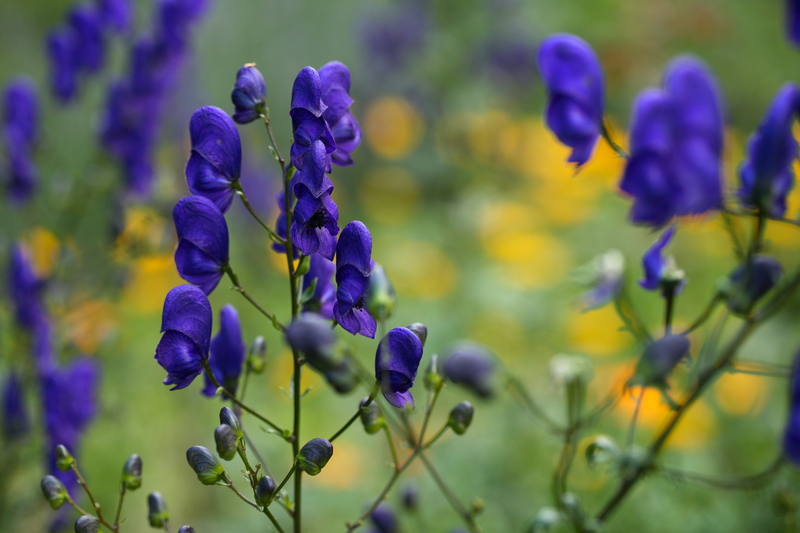Master the Art of Orchid Care
Posted on 19/06/2025
Master the Art of Orchid Care: The Ultimate Guide for Beginners and Enthusiasts
Orchids have long captivated plant lovers with their exotic beauty and astonishing variety. From the mystique of tropical jungles to the windowsills of budding gardeners, these enchanting blooms symbolize luxury, love, and resilience. However, mastering orchid care requires more than just admiration--it's a journey of understanding, patience, and practice. Whether you're new to orchids or aiming to elevate your green thumb, this comprehensive guide will help you master the art of orchid care and help your plants thrive.
Why Orchids Are So Beloved
Orchids represent one of the largest and most diverse families of flowering plants, with over 25,000 species worldwide. Their flowers range from delicate and miniature to extravagant and oversized, showcasing an endless array of colors, shapes, and fragrances.
- They add elegance and exotic flair to any indoor or outdoor space.
- Orchids can bloom for weeks or even months when properly cared for.
- Their symbolism is rich across different cultures--representing beauty, love, strength, and even refinement.

Understanding Orchids: Types and Unique Needs
Common Orchid Varieties
- Phalaenopsis (Moth Orchid): Ideal for beginners, these are widely available and can bloom up to three times a year.
- Cattleya: Known for their large, fragrant blossoms--often used in corsages.
- Dendrobium: Features tall canes and clusters of small, vibrant flowers.
- Oncidium: Sometimes called "Dancing Ladies," these have sprays of tiny yellow blooms.
- Paphiopedilum (Lady's Slipper): Unique pouch-like flowers and easy-to-grow nature.
Each orchid type may have specific preferences, but most popular varieties share similar foundational needs.
The Foundations of Successful Orchid Care
Orchid care may seem intimidating, but with the right knowledge, anyone can nurture these spectacular plants to bloom again and again.
Light: The Essential Ingredient
Lighting is perhaps the most crucial aspect of orchid care, and what distinguishes expert growers from frustrated beginners. Orchids generally need bright, indirect sunlight; direct sunlight can scorch their leaves, while too little light inhibits growth and blooming.
- South or east-facing windows provide excellent filtered light for most orchids.
- North windows are typically too dim; consider supplemental grow lights if this is your only option.
- Examine leaf color to gauge light: healthy leaves should be vibrant green; dark green signals insufficient light, while yellow or reddish leaves suggest too much sun.
Watering Orchids: The Right Amount at the Right Time
Orchids are much less "thirsty" than many other houseplants. Their roots are adapted to clinging to trees and absorbing rain and humidity in bursts. As a result, overwatering is the most common cause of orchid decline.
- Water once a week, sometimes less during cooler months.
- Let the potting media dry out almost completely before rewatering.
- Use lukewarm water--avoid cold or softened water with salts.
- Never let orchids sit in standing water. Use pots with drainage holes to protect roots.
Tip: The "soak and dry" method mimics natural rainfall, providing proper hydration without drowning the roots.
Humidity and Airflow
Most orchid varieties prosper with humidity levels between 40-70%. If your home is dry, especially during winter months, consider:
- Placing the orchid pot on a tray filled with pebbles and water (without touching the bottom of the pot).
- Misting leaves with water in the early part of the day.
- Using a room humidifier for optimal conditions.
- Maintaining good airflow with fans or open windows to prevent fungal and bacterial issues.
Orchid Potting Mix and Repotting
Unlike many plants, orchids require special potting media--not standard soil. Most favor a blend of materials like:
- Bark chips
- Sphagnum moss or coco coir
- Perlite or charcoal to help with drainage
Repotting every 1-2 years is essential for continued health. Signs your orchid is ready for a new pot include:
- Roots growing out of the pot and circling around it
- Potting mix breaking down and retaining too much moisture
- Stunted growth or lack of blooming
When repotting, always use clean tools and soak the new medium to hydrate, then handle roots gently to avoid damage.
Temperature and Seasonal Changes
Orchids flourish in stable temperatures. Most household orchids prefer:
- Daytime: 65-80?F (18-27?C)
- Nighttime: 60-70?F (15-21?C)
Some species need a temperature drop at night to trigger blooms. Avoid placing orchids in drafty locations or near heat vents.
Advanced Orchid Care Techniques
Feeding for Lush Blooms
Orchids are light feeders, but nutrient supplementation is key for robust growth and flowering. Use a balanced, water-soluble fertilizer (like 20-20-20 or a specialized orchid formula) diluted to half or quarter strength.
- Fertilize every 2-3 weeks during active growth (spring/summer).
- Reduce or eliminate feeding during dormancy or when the plant is not actively growing.
- Flush the pot with plain water monthly to prevent fertilizer buildup.
Remember: "Weakly, weekly" is the motto--less is more when it comes to orchid fertilizer.
Encouraging Your Orchid to Rebloom
One of the most rewarding skills to master in orchid cultivation is coaxing your plant to flower again after its initial bloom fades. Here's how:
- After blooms fall, trim the flower spike just above a node (for Phalaenopsis) to encourage possible side spikes.
- Allow the plant a rest period: maintain light, water sparingly, and withhold fertilizer for a few weeks.
- Some orchids (like Phalaenopsis) benefit from a 10-15?F (5-8?C) drop in night temperature for several weeks--this can trigger another flower cycle.
Troubleshooting Common Orchid Problems
Yellow Leaves
- Too much direct light: Move your orchid out of hot sun.
- Natural leaf aging: Older, lower leaves may yellow and fall as new growth appears.
- Overwatering: Check roots for rot and adjust watering frequency.
Root Rot and Soft Roots
- Usually caused by excessive moisture or compacted, broken-down potting mix.
- Repot immediately and trim away mushy, discolored roots with sterile scissors.
Pests (Mealybugs, Scale, or Spider Mites)
- Wipe leaves and stems with a solution of water and mild dish soap.
- Isolate the affected orchid and repeat treatment weekly until pests are gone.
- Neem oil can be used as a natural pesticide.

Cultivating a Thriving Orchid Collection
As you become more confident, consider adding diverse species to your orchid collection. Pay attention to their unique care needs and maintain good records of your watering and feeding routines. Sharing cuttings and tips with fellow orchid enthusiasts can further enhance your skills and understanding.
Display and Design Ideas
- Orchid Terrariums: Great for miniature varieties, creating high humidity microclimates.
- Hanging Baskets: Mimic how many orchids grow in the wild, with roots exposed to air and light.
- Orchid Walls: Mount species like Vanda or Epidendrum on cork or wooden boards for a living art piece.
Ethical Orchid Sourcing
Always acquire your orchids from reputable nurseries or growers that prioritize sustainable, legal cultivation. Many wild orchids are endangered due to over-harvesting, so avoid purchasing wild-collected plants whenever possible.
Conclusion: Achieve Orchid Mastery
With patience, observation, and a little experimentation, you can truly master the art of orchid care, turning even cautious beginners into confident caretakers. Each orchid is unique--by learning to interpret their signs and provide what they need, you'll be rewarded with splendid blooms and a gratifying connection to one of nature's most intriguing plant families.
Ready to start? Choose a suitable orchid species, set up the right environment, and watch as these magnificent plants thrive under your diligent care. Remember, even if challenges arise, every mistake is a step closer to becoming an orchid master!
Further Resources on Orchid Mastery
Empower your green space with the magic of orchids and master their care--one bloom at a time!

